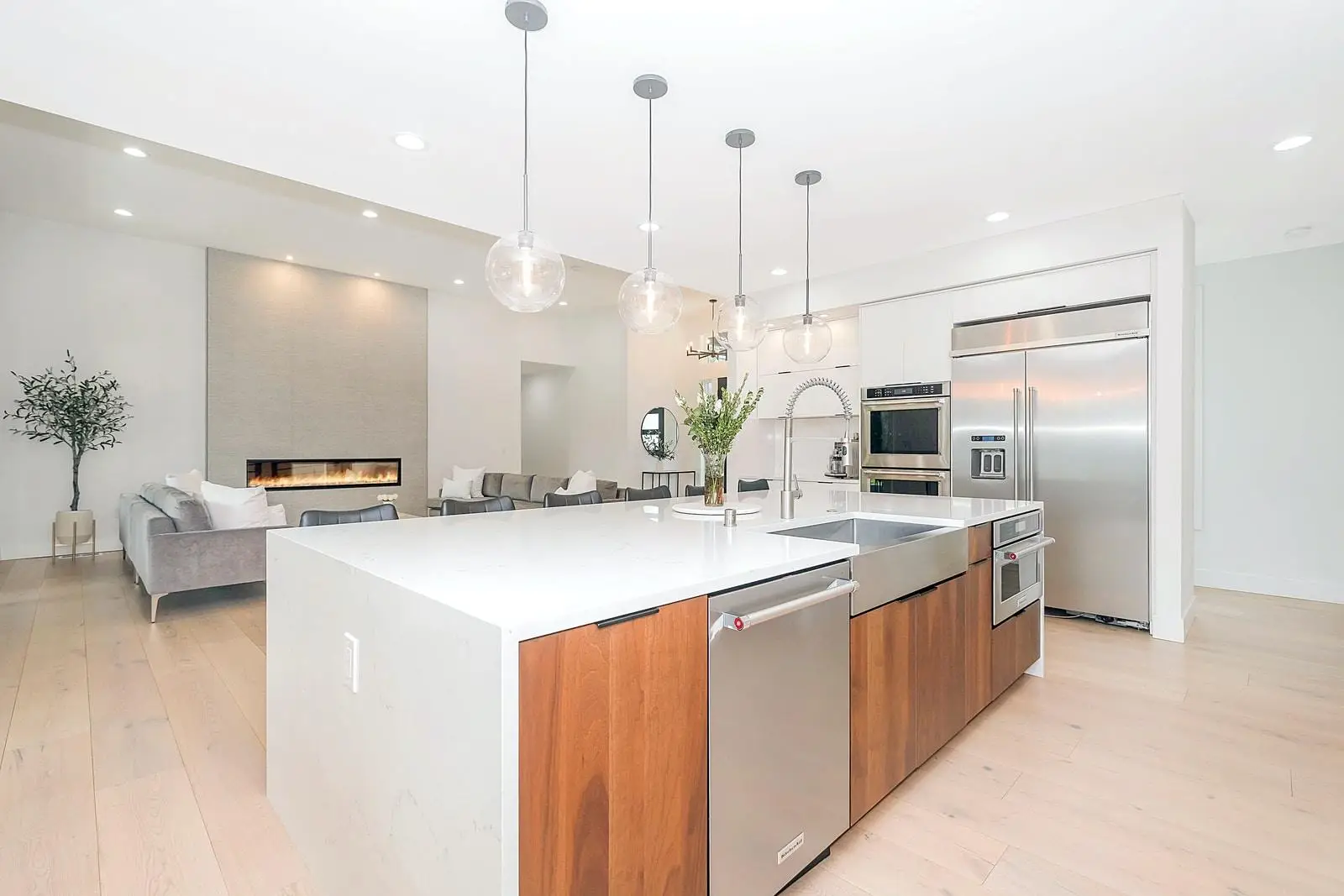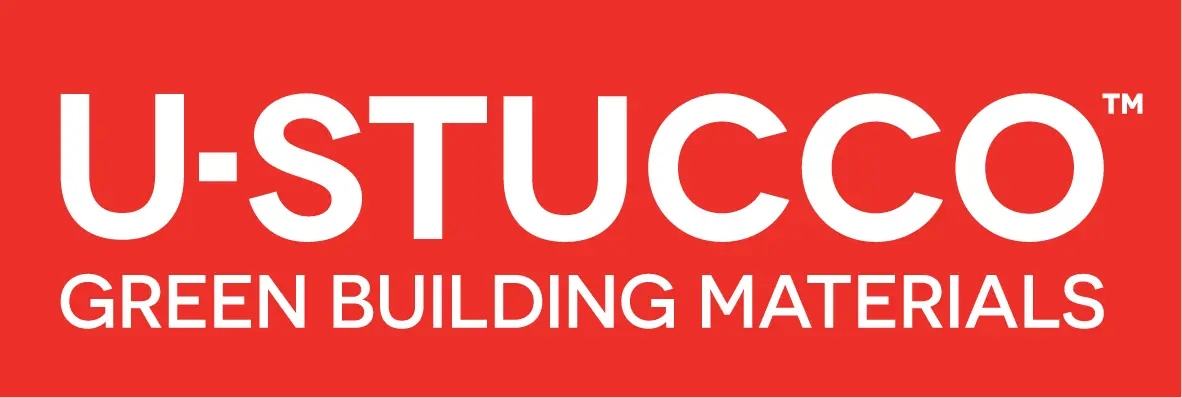Planning and building a house is exciting, and you want a great look with lasting, quality material. Cement homes have always been a popular, sturdy, and lasting choice in home construction. With advances in the industry, concrete homes no longer have to look like chunky blocks. Instead, they can look edgy or on-trend, textured, or smooth.
You may not immediately notice how many concrete homes make up newer neighborhoods. That’s because the sturdy construction may be hidden under textured stucco, siding, or other materials. New homes built in areas that are prone to brutal hurricanes, tornados, or other extreme weather often contain insulated concrete forms, also called ICF. Concrete is here to stay, and it has some beautiful new looks.
And, concrete isn’t just for the outside anymore. More and more homeowners are finding ways to incorporate the style of concrete into their interior spaces as well as exterior. You can create a foundation of on-trend gray with pops of color for an all-around modern, sophisticated yet edgy aesthetic.
History of Concrete
So, what is concrete, besides hard? Humans have been using some kind of cement for as far back as 1300 BC. Early concrete use consisted of coatings of limestone mixed with clay in Middle East houses and evolved into the modern-era standard of concrete construction using Portland cement, in 1860.
Portland cement in various mixes is still in use. The cement is combined with sand, water, and anywhere from fine to coarse stone aggregates. Added chemicals tweak the properties for features like curing times and durability.
One of the best features of concrete homes is their durability. Concrete homes stand amid extreme weather, winds, and frigid temperatures, unlike other building materials.
Cement Homes Trend
It’s no wonder that cement homes are so on-trend. Long gone are the bulky-looking, squared concrete block homes. Now there are multiple ways of forming concrete into complete homes. Concrete block is still a popular method, along with newer forms like panels, poured concrete, and insulated concrete forms.
One popular newer way of building concrete homes involves insulated concrete forms (ICF). These are forms that connect together not unlike Lego blocks. The outsides are foam insulation, connected with plastic frames. The blocks are fitted together according to your house plans and then reinforced with steel rebar. Then, concrete is poured to fill the interior. The result is an airtight, sound-insulating, strong home that’s fire-resistant.
With ICF construction, you can order both interior and exterior walls, and you can even hang drywall on interior walls just as you would with wood wall studs.
So, with ICF construction available, you can build the perfect modern, Key West, Victorian or Colonial home you desire. Enjoy the aesthetic you want without sacrificing the durability of concrete.
Industrial Edge
If you love an industrial aesthetic, concrete is for you. Industrial design, both interior, and exterior is exploding, and the look and feel of concrete expertly incorporate that warehouse edge, a dream for interior designers.
Whether you’re building your exterior of cement or adding concrete walls, floors, countertops, a fireplace, furniture, or accents inside, concrete decor is easy to care for and a joy to accent.
Easy to Maintain
In today’s fast-paced society, many homeowners have better things to do than to provide continued maintenance on their homes. A concrete-constructed home provides ease of maintenance, freeing you up for more enjoyable activities.
Adds Texture
Inside or outside your home, textural elements of concrete usher in visual interest. Do you want a smooth feel or a more enlivening swirl or other texture? Newer methods of poured-cement molds can leave great patterns, even producing the look of bricks. Mix and match to your heart’s content for instant intrigue to your home’s style.
Aesthetic
Gone are the days of a concrete home looking like a boring, clunky block. With today’s advanced building techniques, you can build the home of your dreams.
Cement homes can conjure up power and prestige, a presence among other homes. They’re a great way to express your own style with customizable forms to match your building specifications.
Why a Concrete Home?
When you’re considering a concrete home versus a wooden or other-constructed home, consider this: termites (both subterranean and drywood termites), ants, and other pests love wood homes, but they’re not drawn to concrete homes. Concrete homes are also far less penetrable to chewing pests like mice, rats, and squirrels.
The lack of organic material like wood means less of a concern for mold, mildew, or other organic-feeding microorganisms, along with fewer allergens through air infiltration.
Most of the concrete-form walls use a nontoxic polystyrene foam, which doesn’t contain fiberglass, formaldehyde, or asbestos. So, concrete homes are safer and far more durable over the years.
Types of Concrete Building Systems
So, now that you’re convinced that concrete will be your new home’s material, which building system is the best for you? There are numerous types of concrete building systems, including concrete block, removable forms, panel systems, ICF (Insulating Concrete Forms), and autoclaved, aerated concrete.
Most of us are familiar with the most common method of building: concrete blocks. These rectangular blocks are going through updated techniques with improved insulation within the block’s cavities, either with loose or foam insulation filling. This raises the R-value or its resistance to the flow of temperature or air leakage.
Concrete block construction is something many construction workers are skilled in working with. Block construction also withstands high winds. However, the block method may crimp your home style when it comes to intriguing designs.
The removable forms method of cement construction involves adding reinforcing steel and insulation to removable wall forms and then pouring concrete within those forms. After the concrete has cured, workers remove the forms. This method works well for homes in high wind areas. The benefits of this method are that exterior and interior walls can be poured at the same time, and wall forms can include textures, including brick and drywall. However, this method of concrete house construction may not be easily available in all areas.
Panel systems can be either precast concrete or tilt-up concrete. Precast exterior walls are made at the concrete plant with rough openings for windows and doors. Then, insulation, steel, and wiring is added. Once ready, the massive panels are transported to the construction site and with the help of cranes, lifted and secured to each other and the already-poured foundation. The tilt-up concrete method is done on-site and requires a spacious construction zone next to the home so – after the concrete walls are cured – they can be tilted into place and secured to the foundation and other walls. Panel systems are great for contemporary designs and curved walls not suited for concrete blocks, but require good weather and large spaces. This method also is not available everywhere.
Insulating concrete forms (ICFs) are poured concrete in permanent forms that remain on the house. The planks, blocks, or panels consist of insulating materials and connect with grooved or interlocking plastic or metal material. ICF is known for its durability against fires, earthquakes, and severe weather like frigid winters and hurricanes. IFCs are great for custom-designed homes. However, they’re not recommended for basements in areas with termites unless the foam is treated with a termiticide.
The autoclaved aerated concrete building system is not common in the United States, but a popular option in Europe. It consists of a fire-resistant, non-organic structural concrete mix that expands and traps small, insulating air pockets so it’s more lightweight than other materials. It can be molded and cut to whatever size is needed. It can also be used for floors, walls, and roofs. The insulating value makes it good for warm climates, but you may need custom engineering because the aerated concrete doesn’t have a heavy load-carrying capacity.
Benefits and Disadvantages to Concrete
There are definite advantages to using concrete in your home construction. For instance, concrete doesn’t lose its strength, and with ICF or other methods, it can be custom-formed to meet your architectural needs and wants.
Another clear benefit of having a concrete home is that you’ll save on both heating and cooling costs compared to other construction, like wood-frame homes. The concrete, and included insulation with some methods, has better insulating value. It reduces fluctuations in temperature, and you can say goodbye to those cold winter drafts. The foam-and-concrete pairing cuts the outside-inside air infiltration up to 70% better than a standard-materials home. This is especially advantageous if you live in an extreme-temperature climate.
You also can save on insurance costs with a concrete home. Because concrete homes have shown more resistance to fire, hurricanes, tornadoes, and earthquakes, you can expect a discount on your monthly premium.
If you like your peace and quiet along with temperature comfort, then concrete is the way to go. The concrete walls help insulate you from traffic and other neighborhood sounds and noise pollution for a better night’s sleep.
Although there are many advantages to using concrete, it can be a little more expensive than other building methods. However, you’ll save money in the long run by spending less on heating and cooling costs as well as maintenance. And, you’ll know your home will fare better in bad weather.
Environmentally Friendly
Concrete homes can be more environmentally friendly than other construction material homes. For instance, ICF-built homes don’t require maintenance and give you significant savings on heating and cooling costs. This means a smaller carbon footprint. Concrete can also have recycled contents in the mix, adding to its environmentally friendly, green appeal.
ICF houses include a foam layer within the concrete, helping provide a high thermal mass that keeps outside temperatures from seeping into interior spaces.
Decorate with Concrete Accents
Take advantage of concrete’s versatility to decorate or add accents to either the interior or exterior of your home. Concrete home décor may seem cold to some, but it offers a fantastic, neutral foundation or backdrop for many interior styles, including farmhouse, minimalist, Bohemian and industrial.
Once they’re stained, sealed, and polished, concrete floor, wall, and interior accents are simple to maintain. Often, all you have to do is sweep and wash or mop with a non-abrasive cleaner. How easy is that?
For an interior “pop” try positioning the concrete features with organic, natural elements like wood, and add rich textures and colors to your accents.
Floors
Concrete floors? Yes, please! In recent years, polished concrete floors have boomed in popularity with a sleek, luxurious, and high-style look. This affordable, durable surface is remarkably on-trend and maintenance is a breeze.
Concrete floors are a great choice for open-concept interiors. They let you bring that industrial inspiration from your garage or workshop floor and let it shine in one room or throughout your home. You can tailor the sheen, color, and pattern to your liking. Accent your easy-care floors with color-rich, bold area rugs, houseplants, and vibrant furnishings.
Walls
Give your interior a modern, sleek design with an accent concrete wall. Achieve your custom design look with a smooth, shiny, or subdued finish, or liven up the space with texture and stained colors.
Kitchen
Bring industrial, rustic, or farmhouse intrigue to your kitchen and dining areas by welcoming concrete elements to the mix. The art of concrete countertops continues to evolve into specialty colors, patterns, and finishes. Pair them with richly-colored wood cabinets and accents. If you’re not ready to take the plunge, start with a concrete-topped island in your kitchen or a concrete backsplash.
Dining room tables are no longer made from just wood, either. For an easy-care, neutral-hued dining experience, try a concrete dining table that you can accent for any occasion.
Bathrooms
Bring a streamlined, modern look to your bathroom interior with a cement tub or sink. You can even accent the space with cement candle-holders to tie the space together.
A concrete bathtub can make a grand, luxurious statement, and will last for years, but know whether your flooring can handle the weight of such a glorious tub.
Laundry Room
Consider concrete shelves, flooring, or a concrete-topped clothes-sorting work area for your laundry room. The rugged surface will not only last a long time but will look fantastic.
Deck and Patio
We’re all familiar with the tried-and-true concrete patio. Why not mix it up, literally? Pour a patio with added aggregates or stamps for a nighttime sparkle to liven up social gatherings. Add some intriguingly shaped concrete planters, seating, or outdoor lighting. Today’s artisans know almost no limits in creating stunning concrete outdoor accents, both functional and fanciful.
Concrete for Today’s Homes
Whether you build your entire home of concrete or create cement home accents, you can depend on years of durability and ease of care with lasting safety and comfort benefits. Home construction using concrete continues to increase as both homebuilders and homeowners recognize the value.
Concrete – for both exterior use and interior design – definitely has ascended from its previous garage-and-basement reputation.
Originally posted on Porch.com






